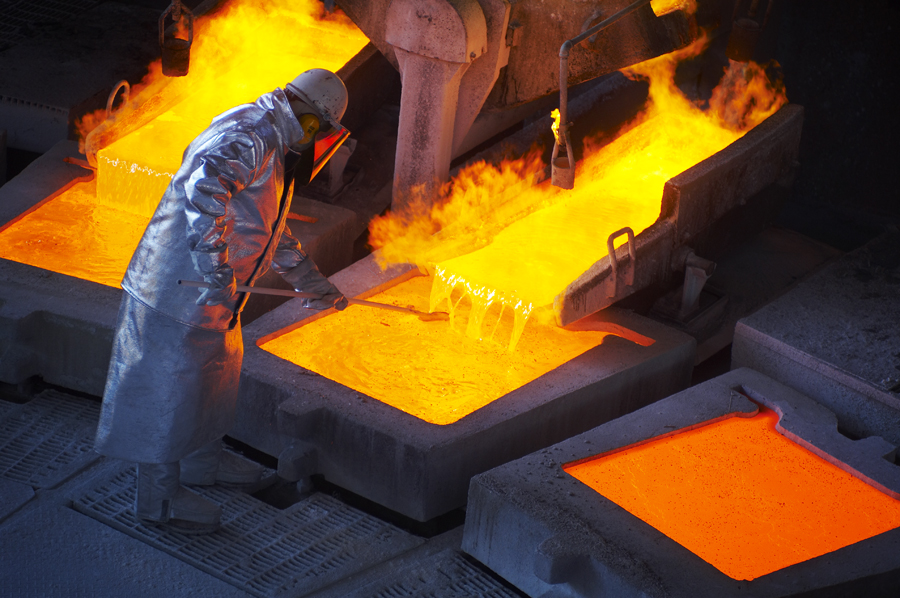Home: Copper smelter terms at rock bottom as mine squeeze hits

(The opinions expressed here are those of the author, Andy Home, a columnist for Reuters.)
Copper’s turbo-charged rally has stalled over the last few weeks as funds have taken profits and physical buyers have refused to chase prices higher.
London Metal Exchange (LME) three-month copper hit a near 10-year high of $9,617 per tonne in late February but is now idling just below the $9,000 level, last trading at $8,910.
Spirits have been dampened by a rebuild in LME stocks, which have more than doubled to 168,500 tonnes from a February low of 73,500 tonnes. Market optics don’t look as bullish as they did.
Global copper smelting activity slipped to its lowest in at least five years in March
Yet there is real tightness in the copper market. It’s just that it’s playing out upstream in the opaque raw materials segment of the supply chain.
A lack of mine supply is squeezing copper smelters, Chinese ones in particular, leading many to take maintenance downtime, a collective pause that may bite the refined metal market in the weeks ahead.
Rock bottom
A lack of concentrates supply has caused smelter treatment charges to tumble. These charges, levied by a processor for converting concentrate into refined metal, rise during times of plenty and fall during periods of famine.
They also determine the smelter sector’s profitability, which is a big problem right now.
This year’s benchmark charges were set at $59.50 per tonne, which was already the lowest since 2011.
The spot market has since imploded further with Fastmarkets dropping its Asian treatment charge assessment to $21.90 per tonne, the lowest since the index was launched in 2013.
Mine-to-trader transactions are taking place at even more bombed-out numbers with Chilean producer Antofagasta selling 10,000 tonnes of copper concentrate for June shipment at treatment and refining charges (TC/RCs) of about $10 a tonne and one cent a pound.
China’s top smelters conspicuously failed to agree a minimum floor price for second-quarter purchases for only the third time in the Smelter Purchase Team’s history.
No-one wants to lose face by setting an unrealistic floor price when individual smelters are prepared to hunt down parcels of concentrates at such low numbers.
Smelter activity at five-year lows
Smelter economics are complex with multiple variables such as gold and silver credits and market conditions for the sulphuric acid generated in the smelting and refining process.
But there is no doubt that current spot treatment terms are below the global break-even point.
The proof is the amount of Chinese smelter capacity scheduled to be taken offline for maintenance in the coming months.
Goldman Sachs estimates that 700,000 tonnes of annual capacity will be affected in April, two million tonnes in May and a further 900,000 tonnes in June.
The bank, a copper super-bull, expects this to translate into a cumulative loss of metal of around 200,000-250,000 tonnes with the risk that “these planned maintenance phases are extended if (treatment and refining charges) don’t recover.” (“Copper – Just another bull market speed bump,” March 31, 2021)
This collective smelter downtime is going to occur during what is a seasonally strong period for demand and may already be in the mix of drivers behind China’s still-strong imports of refined copper.

Nor is it just Chinese smelters that are affected.
Global copper smelting activity slipped to its lowest in at least five years in March, LME broker Marex Spectron and satellite service SAVANT found.
“The margin pressures smelters face from a shortage of concentrates has been closely followed but activity within Asia seems highly sensitive to that factor,” Guy Wolf, global head of analytics at Marex, said.
China, however, is where the concentrates shortfall is having its most acute impact because of the size of the country’s smelter sector and its hunger for copper as the post-coronavirus stimulus boom rolls on.
China’s imports of mined concentrates fell by 1% last year, the first annual drop since 2011, also a year of supply stress and the last time the annual benchmark settled below $60 per tonne.
It’s worth remembering that a lot of new smelter capacity has come on-line in China in the last two years, which should have translated into rising imports of raw material.
Copper mines’ collective inability to deliver to those new plants has laid the groundwork for the unfolding concentrates scramble.
Mine recovery?
China’s flat concentrates imports last year reflected a global mining sector that grew output by a meagre 0.4%, the International Copper Study Group found.
A year of two halves saw mine output slump by 3.5% in April and May as producing countries such as Peru were hit by covid-19 lockdowns before recovering from June onwards.
That recovery momentum is expected to build over the course of this year and the latest Chinese import figures for March show a strong pick-up in concentrates arrivals after weather-related shipping delays in Chile.
“It appears that the impact of the pandemic on mine supply is past its peak,” according to JP Morgan, which is expecting the concentrates tightness to ease over the coming months, helped by the maintenance closures in China. (“Metals Weekly Copper Outlook”, April 8, 2021)
Indeed, the bank’s bear stance – it forecasts average prices to peak at $9,000 this quarter before sliding to $7,865 per tonne over the second half of 2021 – is partly predicated on the amount of new mine supply it expects to hit the market over the next couple of years.
However, the time of plenty still feels a long way away. Smelter stocks are low and will take time to replenish, leaving the market acutely vulnerable to any further disruption to mine production.
Even assuming copper’s notoriously accident-prone supply chain can deliver more concentrates, the impact on smelter output is already playing out, which means the flow-through effect on refined metal dynamics should follow shortly.
(Editing by Barbara Lewis)
More News
{{ commodity.name }}
{{ post.title }}
{{ post.date }}

Comments